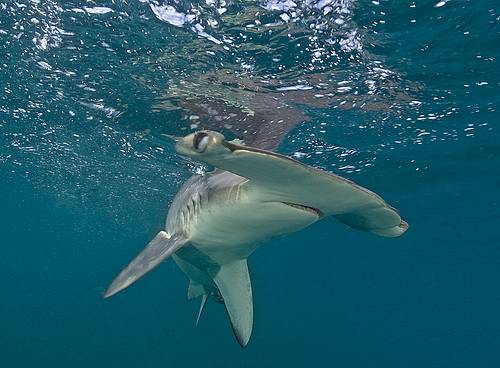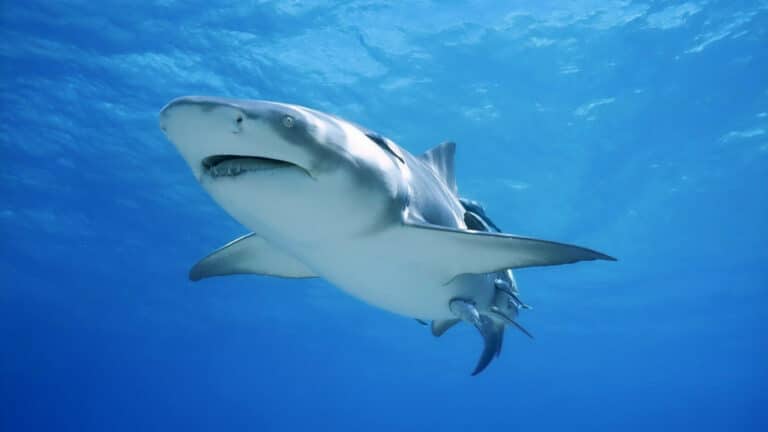By Courtney Cooper
Sharks and their hunting Techniques
Sharks are impressive sea creatures that hunt in different ways. They have 6 senses, smell, hearing, touch, taste, sight and electromagnetism that help keep them at the top of the food chain. To be able to witness these sharks hunting their prey in the wild is a privilege. This blog explores the different hunting techniques and which sharks use them. We also discuss further shark facts that you might be interested in! Apex Predators provides the best shark cage diving in Cape Town.
4 Different Shark Hunting Strategies
Ambushing
Benthic species of sharks are known to inhabit the ocean floors, from shallow coastal waters to the deep sea. Examples of these types of sharks include Angel Sharks, Wobbegongs and Nurse Sharks. Angel sharks are one of the species that bury themselves in muddy and sandy areas where they can hide before ambushing their prey. They tend to choose areas around reefs or even in reefs and kelp forests, where fish are.
The pelagic species of sharks inhabit tropical and temperate waters and are migratory. They are able to hunt to about 6,600 feet. The most well-known pelagic species is the Great White Shark. Unlike the bottom dwellers, Great Whites are too large to bury themselves in the sand, they must rely on their countershading to camouflage. Their blue-grey top resembles the water and their white underbellies help obscure it. Great White sharks tend to attack their prey from below, by swimming at high speeds before launching themselves. This tactic catches the animal by surprise with one bite.
Chase and Trap
Sharks that rely on reef ecosystems rely on the chase and trap hunting technique. Sharks such as the White Tip Reef Shark, chase their prey into small crevices where they then use their snout to catch their prey. Their slim bodies enable them to squeeze in between reefs and small spaces. Grey Reef Sharks are larger and are less mobile among the reefs. They have adapted their hunting techniques to include hunting near the White Tip, where it can then catch any prey leaving crevices, trying to escape the White Tip.
Herd and Stun
Perhaps the most fascinating hunting technique, the herd and stun is a sight to see! The Thresher shark uses this technique with their distinct elongated tails that delivers powerful blows to its prey. These weapons measure around 9 feet long and they are able to move horizontally or vertically. The Thresher Shark hunts in groups or pairs. First, they herd a school of fish together and then they hit the fish with a powerful blow that can reach up to 50 miles per hour, that literally stuns them.

Pinning
The most popular shark to use pinning as a hunting technique is the Hammerhead Shark. They use their eyes that are placed on either side of its head to scan large surrounding areas quickly and using their flat, T-shaped heads to pin stingrays to the ocean floor. In addition to hunting Stingrays, the Hammerhead Sharks uses their heads to unbury other prey that are concealing themselves on the seabed.
These extraordinary animals have mastered adaption and survival in the oceans. From catching their prey by surprise to pinning them and disorienting them, their diverse hunting techniques are fascinating and we can’t wait to witness how they continue to shape the marine ecosystems.
If you enjoyed this article, you may also be interested in our other article, where we discuss how sharks see. Make your new year exciting. Book your Shark cage diving in Gansbaai.




